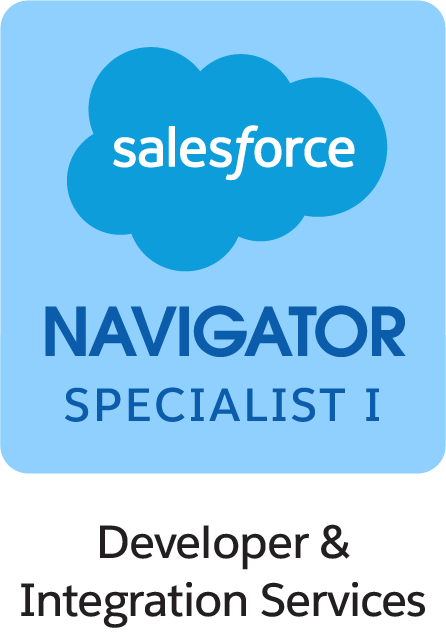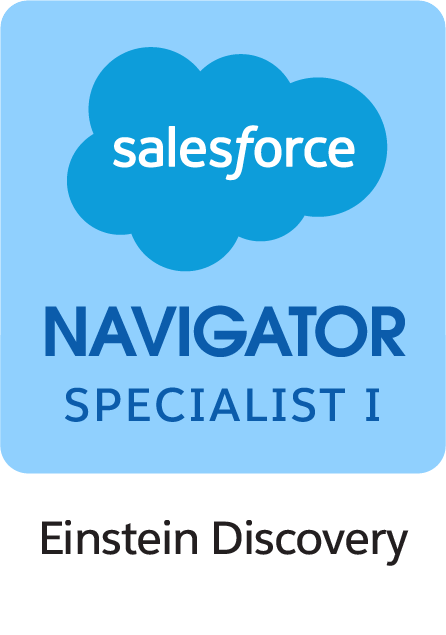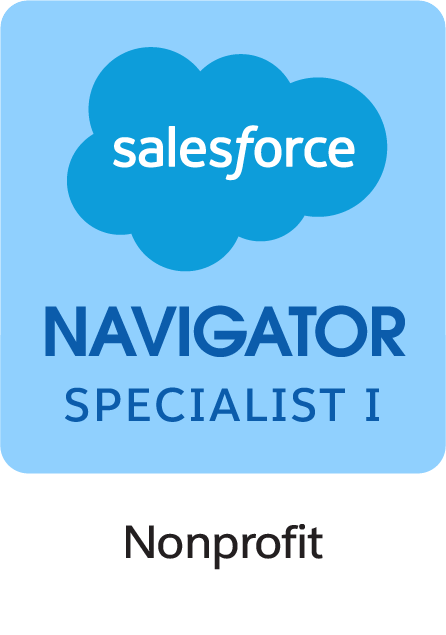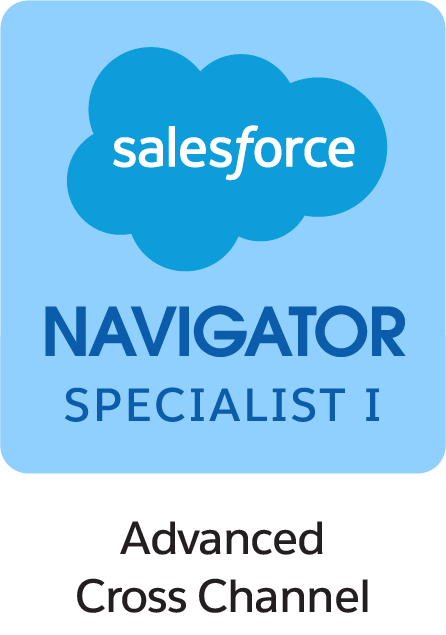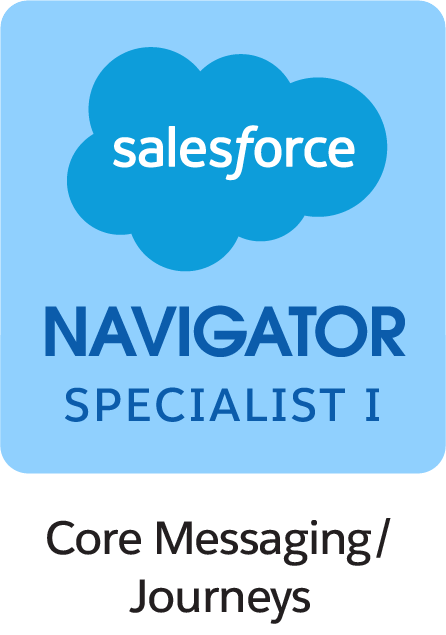Salesforce for Walking Holidays Company


After an unsuccessful Salesforce implementation with their previous Salesforce partner, the client actively reached out to the Salesforce Customer Success Group to understand what went wrong with the implementation. They were introduced to two Salesforce partners, one of which was Girikon, and they chose Girikon because the Salesforce consulting partner understands the challenges faced by small businesses and has the reputation of helping various Salesforce clients in distress fix issues while continuing their BAU operations.
Girikon was asked by the client to support them in their continued transition to use Salesforce and to assist their on-the-ground consultancy team develop customised solutions to handle the sales management and booking process.
Having operated for three decades, the client has proudly served as the leader and innovator in supported walking holidays across Australia. They simplify the process of organising a walking holiday, enabling customers to walk with ease, carrying only a light daypack containing lunch and essentials. Recently, they have also expanded their destinations to New Zealand, Japan, and many European countries.
Two of the company’s unique selling points are unparalleled comfort and flexibility. Their customers enjoy exclusive access to Australia’s breathtaking natural landscapes on foot, coupled with the luxury of indulging in a hot shower, delicious meals, and a comfortable bed at the end of the day. Whether opting for self-guided walks, guided walks, or a group custom-built trip, participants will always walk comfortably and backpack-free. Last but not least, the client facilitates walks throughout the year, with customisable options catering to any group size, preferred companions, and desired destinations.
After operating with traditional processes for nearly 30 years, the client realised the need for digitalisation to personalise their customer experience, improve operational efficiency through automation and make strategic decisions with real-time data. They chose Salesforce as a platform to support this organisational change. For the first time implementing Salesforce, they chose a Salesforce partner who presented them with a low-cost and completely customised solution. Unfortunately for them, the timeline seemed to be constantly pushed back, and the partner spent more money than they could actually deliver. Moreover, their over-customised solutions failed to satisfy the client’s business needs. Losing patience with the first partner and lacking confidence in the solutions they had built so far, the client reached out to Salesforce. They ended up choosing Girikon, a Salesforce implementation partner who thoroughly understood their challenges and had a clear view of what to do.
The challenge for the client lies in the fact that their walking products are highly complex and flexible since every walker walks differently and has different needs. At the same time, being a customer-centric company, the client always wants to create a simplified system for their customers to improve user experience and efficiency. For example, at that time, they wanted to enable a simple system where a primary contact person could enter the other group members’ contact details and their preferred payment method. They also expected the system to allow the payment to be split between group members if preferred. In the backend, the client wanted to identify the relationship between contacts for that order by developing a feature that allows customers to provide additional information about their group. This could include information such as the relationship between the contacts, their preferred accommodation type, and any specific requirements they might have. This information could then be used to book the accommodation accordingly.
When Girikon stepped in, the following challenges were encountered by the client:
Booking Forms
The lack of synchronising trip and trip option content between their website and Salesforce platform created inefficiencies and inconsistencies in their booking process. Additionally, they had yet to empower their admin team with the capability to send booking form links and process deposits seamlessly. These pain points highlight the need for improved integration and functionality between their website and Salesforce, as well as streamlined administrative processes for smoother customer interactions.
Lead Management
The client did not fully utilise Salesforce standard functionalities to manage their leads. Whenever someone put their contact details in the form, whether they completed filling out a form and made a payment or not, an order would be created in Salesforce. There was no lead assignment rule in place, so leads had to be assigned to a particular destination consultant manually, which could be time-consuming and prone to errors. This poor practice of managing leads created confusion and inefficiencies among team members, making it hard for them to follow up on closing a sale and maximise conversion.
Account and Contact Management
The client also did not fully utilise the standard functionalities of Salesforce to manage their accounts and contacts. Only accounts were created in the system, and no individual contacts associated with these accounts were created. If an order was placed for multiple passengers, the client’s staff could only see the first passenger. This lack of individual contact records could lead to difficulties in managing communication, tracking preferences, and providing personalised service to each customer within the group.
Payment Management
Status Discrepancies in Orders: As any prospect who started filling their booking form would be created as an order in their Salesforce backend, the client had no way to tell if an “on hold” order was due to partial form entries or pending bank transfers.
Lack of Xero Integration for Bank Transfer Status: Integration with Xero was needed to track the status of bank transfers related to individual orders, streamlining the process and providing real-time updates on payment status.
Inability to Make Individual Payments: Individuals in a group could not make their payments separately, resulting in buyer hesitation coming from a big group of walkers.
Incorrect Bank Transfer Email Formatting: The email sent to customers for bank transfers contained incorrect formatting, which may lead to confusion or lack of clarity for customers.
Manual Reconciliation of Bank Transfers: The status of bank transfers in the Salesforce object “Payment Transaction” needed to be manually updated to “completed,” leading to inefficiencies and potential errors.
Passengers Management
Separate Email Communication for Passengers in a Group: There was no functionality to group passengers together, such as couples, to streamline communication and notifications. If all contacts associated with an order had the field “contact people separately” enabled, they would receive separate emails about the trip. This could lead to fragmentation of communication and potentially cause confusion or duplication of information.
New Passengers Handling: It was not possible to add more people to the same order directly: adding a new passenger would create a new order line item (OLI). However, this posed a challenge as having multiple people on the same OLI could result in redundant emails and notifications regarding the trip and payment, potentially causing confusion for their customers.
Lack of Visibility into Passenger Relationship: There was no way to identify the relationship between passengers, making it challenging to manage group bookings or related individuals efficiently.
Logistics Management
At the time, a great amount of their time was spent on arranging logistics (accommodations, restaurants, transport, etc.) manually for their customers. Streamlining this process to save time was one of their priorities, and in order to do that, they needed to overcome the following challenges:
Inability to Determine Customer’s Preferences: Records, especially accommodations, were not prioritised, making it difficult for them to determine each passenger’s preferences for accommodation types or pickup modes.
Inability to Select Accommodation for Multiple Days: When a hotel or hostel was available for more than one day, they couldn’t select it for all those days at once.
Inability to Select Logistics for Specific Days: Their staff members were unable to select logistics for specific days, particularly when the same accommodation was available for consecutive days.
Invisibility of Price Based on Date Range: Prices should only be visible for the selected date range at the Attach Logistics level, but this functionality was lacking.
Reports
Suboptimal Reporting with Workbooks: The current reporting system using Workbooks was not optimal, potentially leading to inefficiencies or inaccuracies in generating reports.
Inability to Do Costs and Profits Analysis: The reports previously set up by the former Salesforce partner failed to give them a single view of costs and profits.
Salesforce Booking Forms
Girikon helped the client develop booking forms within Salesforce to establish it as the primary source of accurate information. This would ensure that any necessary updates or changes can be made directly within Salesforce, with corresponding updates reflected on the website. Specifically, syncing options such as trip details and departure dates from Salesforce to the website would be simplified, enhancing efficiency and maintaining consistency across platforms.
Opportunity Management
The client’s knowledge was limited to accessing and entering records in the custom objects that the previous partner created for them. They didn’t know about Salesforce standard objects and best practices for managing leads and opportunities. Girikon thus introduced them to a standard sales process within Salesforce, consisting of the following components: Leads, Accounts, Contacts, Opportunities, Products, and Orders and Opportunity tracking using standard Opportunity stages provided by Salesforce. This helped the organisation establish relationships between standard and custom objects to streamline data management. Furthermore, Girikon also implemented automation based on those Opportunity stages, such as triggering email notifications or tasks to ensure timely follow-up and engagement.
Contact Management
To address the lack of visibility into the relationship between passengers in the same group, Girikon introduced a primary contact feature within the system, emphasising the relationship between contacts and opportunities and making it easier to manage and track interactions. What is more, Girikon also suggested incorporating a contact-to-contact relationship, including features such as identifying co-passengers and designating a primary contact within a group. This enhancement aimed to streamline communication and collaboration among contacts and optimise relationship management processes.
Product and Pricebook Management
Girikon recommended that the organisation utilise the Product object within Salesforce and establish relationships between various entities, such as relationships between Product, Trip, Trip Options, Account, and Contact. Setting up relationships between the Product object and the Trip object, as well as the Trip Options object, for example, has helped the client manage departure dates effectively. Additionally, relationships between the Product object and both the Account and Contact objects were aimed to streamline data management and enhance connectivity between different entities within the Salesforce platform, ultimately optimising sales and customer relationship management processes for the client.
Communication Management
Communication plays a big part in speeding up the conversion process and retaining old customers; however, before this engagement with Girikon, their emails did not perform as well as they expected. Girikon overhauled their email marketing by designing headers, footers and any mentions of the company name, ensuring that the EDMs were fully branded and formatted according to their brand guidelines (logos, colours, fonts and overall design aesthetic). Depending on the complexity of the personalised and dynamic content requirements, they customised existing email templates and built new ones using HTML and CSS. This enabled greater flexibility in designing and formatting the EDMs to accommodate dynamic content.
New Business Unit Rollout
While supporting the client’s BAU activities and rebuilding the client’s architecture in the background, Girikon also developed and deployed their new business unit, enabling multi-currency support in their Salesforce org so that they could manage their walking products in different currencies.
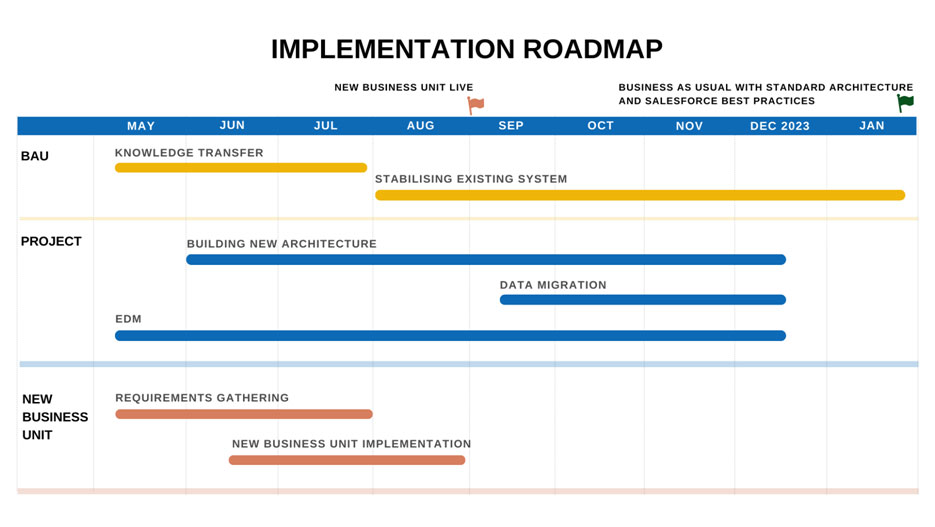
The client’s team are now very happy that the Girikon team could do a lot for them during a short period, compared to their previous partner. They are more than thrilled to see tangible results achieved from the implementation, such as stable booking forms for their customers. Girikon also helped them address various operational inefficiencies, such as the challenge of managing numerous custom reports internally. Using Salesforce standard objects, Girikon helped them create new reports to track bookings monthly and helped their business manager monitor revenues coming from the current month as well as the upcoming months. Finally, they are very impressed that Girikon did all this support and project work while also ensuring that they could roll out their new business unit in time, instead of dragging it for another year.

